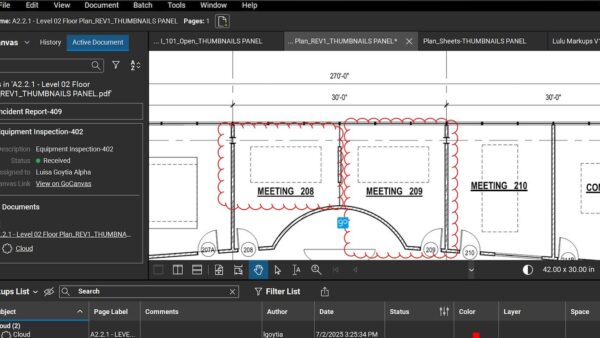
One of the key political concerns – for whoever forms the next government – will be improving productivity, since this has a large effect on taxation and spending decisions. With this is mind, BIM will become more influential than ever.– Alan Muse, RICS
Post-election, the next government will need to boost economic productivity – and encouraging BIM adoption across the wider public sector will yield benefits for all, writes Alan Muse, director of built environment at the RICS.
BIM has come into sharp focus in recent years, particularly given the UK government’s programme for modernisation. This requirement collaborative Level 2 BIM (with all project and asset information, documentation and data being electronic), on its public sector projects by 2016 will help to reduce capital cost, whole-life cost and the carbon burden on the UK’s major public sector builds.
But when it comes to adopting BIM there seems to be a two-tier system developing between those that are actively engaging with the technology and those that aren’t. This pattern – and indeed RICS’ own research – indicates that it’s the larger contractors and consultants that are more inclined to get “BIM ready” and upskill their staff.
Ahead of our recent BIM conference, we spoke to companies of different sizes to assess their levels of knowledge and experience: around a third of SME respondents admitted to having a limited understanding of BIM, and nearly half said that although they had a certain level of knowledge, they hadn’t yet had an opportunity to put this understanding to practical use. And half of the small and medium-sized firms we spoke to didn’t even have BIM on their agenda.
More research, namely the most recent BIM survey by NBS, which shows a drop in BIM adoption in the last 12 months, is certainly worth taking into account. A few years ago, we saw some quick wins when it came to take up of BIM, but progress may now be harder and a further government ‘nudge’, post-election, could help.
One of the key political concerns – for whoever forms the next government – will be improving productivity, since this has a large effect on taxation and spending decisions. With this is mind, BIM will become more influential than ever, as it has the potential to improve productivity in an industry that forms a significant part of GDP, but is constrained from improving capacity through skills shortages.
What’s more, the government needs to encourage the “enablers” of BIM, including further promoting the new procurement models that have been developed to remove some of the cultural and contractual barriers to BIM implementation.
This should extend to a more direct approach to local authorities, showing some of the exemplar practice from central government. These difficult issues need to be addressed if BIM adoption is to increase among SMEs.
Financially, the Level 2 public sector mandate means that BIM adoption can offer rewards. It stands to reason that, even if it’s larger companies that pick up contracts directly from central government and local authorities, a working knowledge of BIM will be required throughout the supply chain. That’s why more SMEs need to start taking the necessary steps towards engagement.
RICS offers a number of resources, services and qualifications to help the industry engage fully with BIM. We have a BIM Manager Accreditation and related training courses, developed in response to industry requirements.
However, our involvement in the BIM agenda is not limited purely to giving businesses the information they need – we also listen to, and act upon, the experiences and views of our members – even taking these views to government where necessary as part of our role in the BIM Task Group.
RICS will continue to raise awareness of BIM with quantity surveyors, but construction bodies must collaborate more: BIM is not just a design tool and needs to be geared more towards cost and time information for client decision-making.
For more information on RICS and BIM, visit http://www.rics.org/us/tag/bim/














